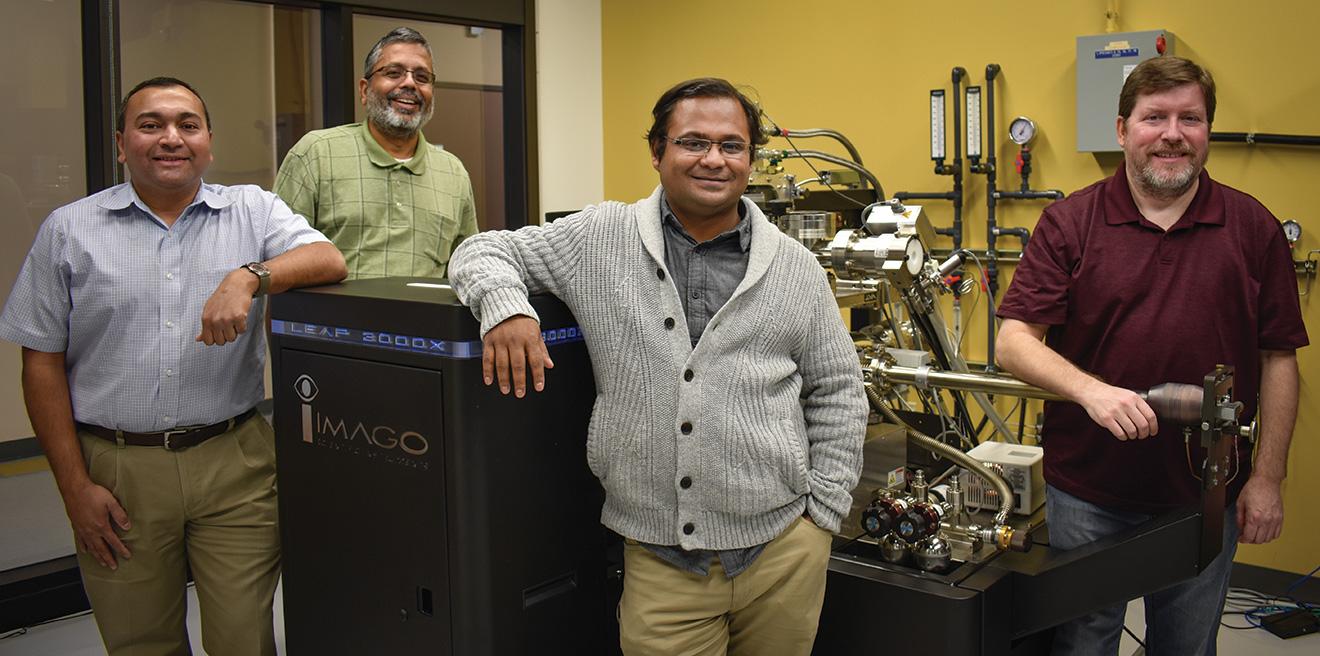
Researchers in UNT's Department of Materials Science and Engineering have found a way to create an ultra-light, highly heat-resistant, magnesium-based material by engineering bonds at an atomic level. Their research was published in the Nature Communications journal.
"The fact that we can peer into atoms and are able to connect the bonding between atoms and the material properties for practical use is amazing," says Deep Choudhuri, research assistant professor.
Choudhuri — together with Srinivasan Srivilliputhur, associate professor; David Jaeger, senior research scientist in UNT's Materials Research Facility; and Distinguished Research Professor Raj Banerjee — used this discovery to create a magnesium alloy that can withstand usage at higher temperatures, such as those experienced in aircraft and automotive engines.
Banerjee also was awarded a $900,000 grant by the Air Force Office of Scientific Research to develop and investigate multi-phase high entropy alloys to enhance structural performance in aircraft and for other engineering applications.
Another set of researchers — including Wonbong Choi, professor of materials science and engineering and mechanical and energy engineering, and two of his doctoral students — created a uniform, thin, two-dimensional material that could lead to the design of next-generation ultra-thin opto-electronic devices. Their research was published in Nature's Scientific Reports journal.